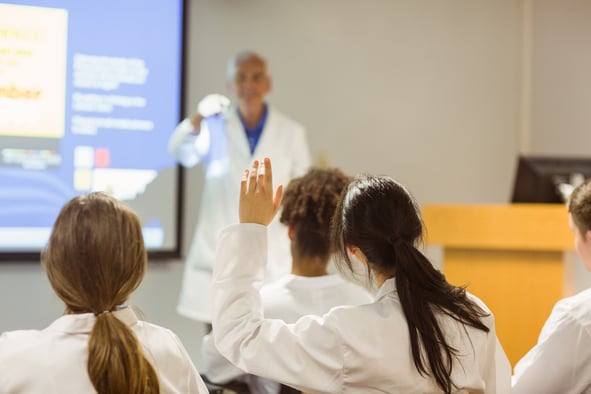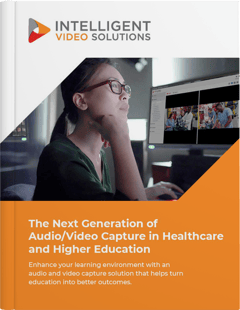If the reputation and funding of your program or institution depend on accreditation then a video capture system may help you provide the required evidence to achieve and maintain accreditation.
Accreditation is a method of ensuring academic quality by adhering to defined standards. Depending on your accrediting organization’s criteria, standards may be related to student assessment, curriculum innovation, use of technology to enhance learning, ongoing curriculum evaluation, etc. While the details of each agency’s standards vary by industry, they all ask you to show how you meet their criteria to attain and maintain accreditation.
Most accreditation standards include language like, “must demonstrate” or “provide evidence”. A recorded video is demonstrative evidence of an event. Other examples of evidence include samples of student work, course assignments, and evaluation scores. Some standards define acceptable types of evidence, so confer with your accrediting agency’s guidelines.

Video captures students as they perform required skills and demonstrate learning competencies. For example, recordings of students performing safe practices in a simulated environment, or entry-level clinical skills prior to clinical placements in their community. Video is also an effective way to demonstrate student performance of non-technical skills. Skills like communication, leadership, and collaboration, must be proven too, but are more difficult to define and measure. Video capture software that allows you to associate checklists and formative or summative assessments with video also help measure program learning outcomes and show trends over time with statistical reports.
Does your accrediting agency specify criteria regarding clinical observation? If so, your video capture system should help you meet those standards too. For example, if you must ensure student supervision is provided during clinical placements, live stream video from an off-site facility back to faculty for observation of student-patient interaction helps meet this need. Similarly, if your standards require in-person observation of a skill or simulated event to be limited to a certain number of students and faculty to maintain realism, use a video capture system to live stream the event to a larger group located in a remote observation location like a conference or debrief room to address this requirement.
Like programmatic accreditation standards, institutional accreditation agencies look for evidence of sustained and future-proofed quality education. An accessible, secure, video capture system that scales across campus may be a part of your institution’s infrastructure or planned resources for continued, sustainable quality education.
Video may support multiple standards and stages of your accreditation process beginning with self-study and continuing through monitoring and future re-evaluation. If you are considering A/V Capture just know they are not all created equal. As you evaluate options use our Guide to help determine the features and capabilities that are most important to improving your program's outcomes.








